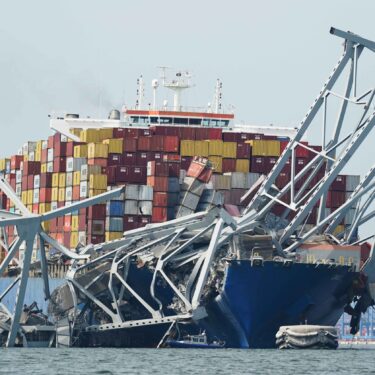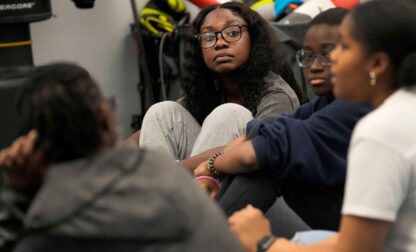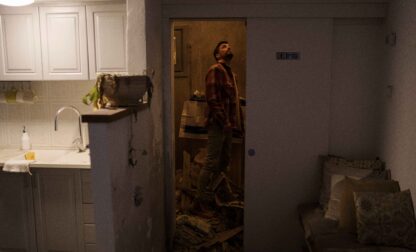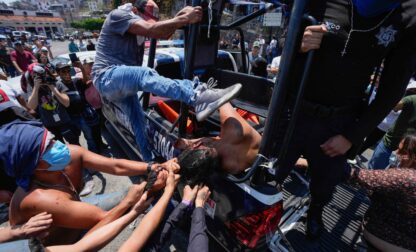The call arrived a little after 3 a.m. That’s when Baltimore reporter Lea Skene learned from her editor that the Francis Scott Key Bridge had just crumpled into the river below.
With Deputy Director of Global News Coordination Tamer Fakahany writing the first alerts, Skene sprang into action and got a key fire department official on the phone. That allowed the AP to quickly give accurate details. Editors Christie Hampton, Shameka Dudley-Lowe and David Cohen filed the first alerts and urgents. And soon a team of AP reporters, photographers and video journalists joined in to deliver coverage that earned 2.2 million page views on the first day of the story and huge play in newspapers around the world.
Skene was AP’s first journalist on the scene at the foot of the bridge, getting there before roads became snarled and the site became even more difficult to reach. She supplied information from the scene throughout the day and into late the next afternoon, anchoring AP’s coverage.
Annapolis reporter Brian Witte scored early interviews with the governor and the chair of the National Transportation Safety Board on Wednesday, the day after the collapse, and he joined Skene in Baltimore for field reporting. He also found the brother of one of the construction workers who died and put him on the phone with reporter Will Weissert, who interviewed him in his native Spanish.
Video journalists Nathan Ellgren and Rick Gentilo provided coverage that was the most downloaded among customers globally for the week, particularly their early shots, after finding vantage points that weren’t sealed off but still showed the bridge’s remains.
Photographers Mark Schiefelbein and Matt Rourke delivered images of the crumpled bridge and of locals discussing how the collapse challenged Baltimore’s identity as a port city dating back to before the U.S. Declaration of Independence.
In the days that followed, AP’s Joshua Goodman and Richard Lardner quickly turned an investigative look at whether tugboats could have made a difference by accompanying the 95,000-ton cargo ship Dali for longer, before it drifted off course and crashed into the bridge. They showed how ports have their own individual rules for tugboats and how cost concerns cut short some tugboat escorts.
For delivering an encompassing and engrossing look at how the collapse of a bridge scarred a city’s psyche and uncovered potential trade-offs when it comes to safety, Skene, Witte, Schiefelbein, Rourke, Ellgren, Gentilo and the entire Baltimore bridge collapse team are this week’s Best of AP — First Winner.
Visit AP.org to request a trial subscription to AP’s video, photo and text services.
For breaking news, visit apnews.com.






